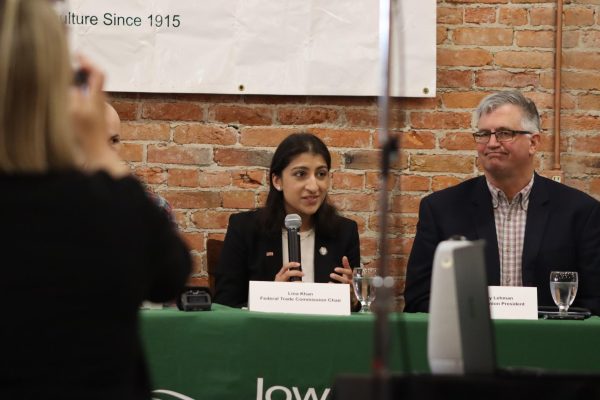The dos and don’ts of fashion on campus
October 5, 2008
As students progress through the college years, it becomes more important to consider dressing for future jobs.
“Iowa State student’s fashion has changed a little [in the nine years] I have been here,” said Jean Parsons, associate professor of apparel, educational studies and hospitality management. “You see a lot more piercings and tattoos and students dress a lot more casual now.”
It is easy for students to throw on sweats right before class. Zach Johnson, junior in journalism and mass communication and co-editor in chief of Trend, Iowa State’s fashion magazine, said students in lectures might not care about their dress because they think no one will notice them. However, he believes students who dress up for class are more attentive and alert.
What students wear to class differs with each student — some wear sweats to class while others wear heels.
“I think it depends on the person, but toward students’ junior and senior year, I think it is important to start dressing up for class,” said Danielle Jo Sponder, senior in apparel merchandising, design and production. “They are about to go out in the real work world which they will have to dress up for, so they might as well start now.”
Dress codes for interviews can differ on the position you’re interviewing for, but most interviews are more dressed up than casual. Sponder said it is best to wear a professional jacket to one.
“Dress for the job you want, start looking like the people above you,” said Christine Wise, academic advisor for apparel, educational studies and hospitality management.
Sponder said a lot of internships are a long-term interview.
“Before I had my interview for my internship with Target, I stood at Target and looked at what other employees were wearing,” she said.
Johnson had an internship with the Meredith Corporation last summer and recommended an individual should wear a suit or dress pants with a nice shirt to an interview. A tie is also appropriate for men.
“I always dressed up, no matter what,” Johnson said. “I wanted to be presented in the best way possible.”
Other tips from Johnson included making sure your shoes match your belt and jacket and avoid wearing anything that would be distracting. Women shouldn’t wear too much makeup or noisy jewelry. Wear appropriate heels — not something you would wear out on the town.
Another point Johnson made for women was to make sure you’re covered up.
“A low-cut top is not professional, and it may send the wrong message,” he said.
Parsons said tattoos and piercings don’t look professional, so cover them up if possible.
“The first impression is a visual one — you need to have a professional appearance and a professional attitude,” Wise said. Parsons suggested thinking about what the other side of the desk sees.
The top tip from Sponder and Johnson was that “it is better to be overdressed than underdressed.”
How you present yourself affects how others see you and often has more impact than you think.
“People make judgments right off the bat, whether we want to admit it or not, so it’s always best to be prepared,” Wise said.
















